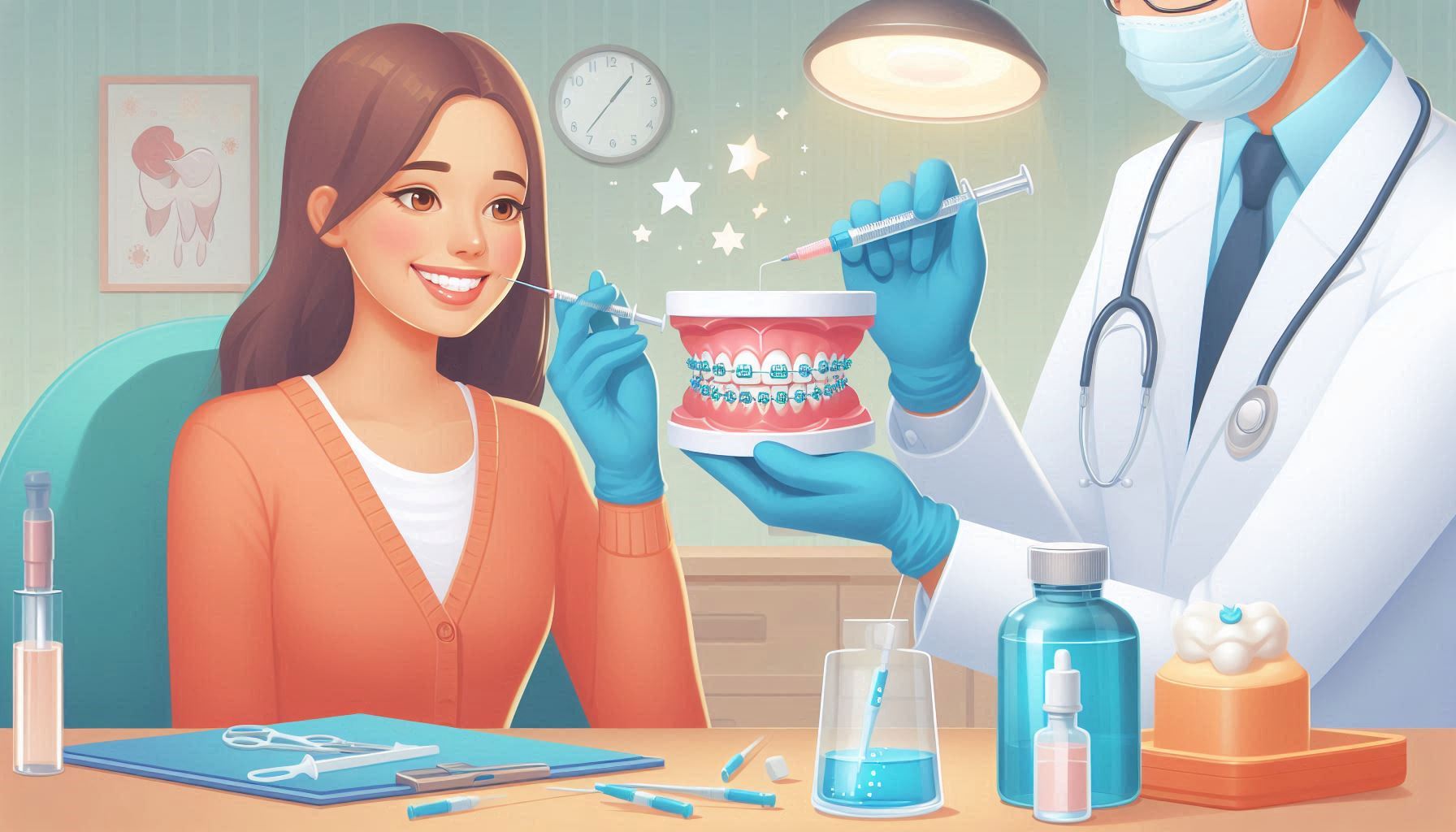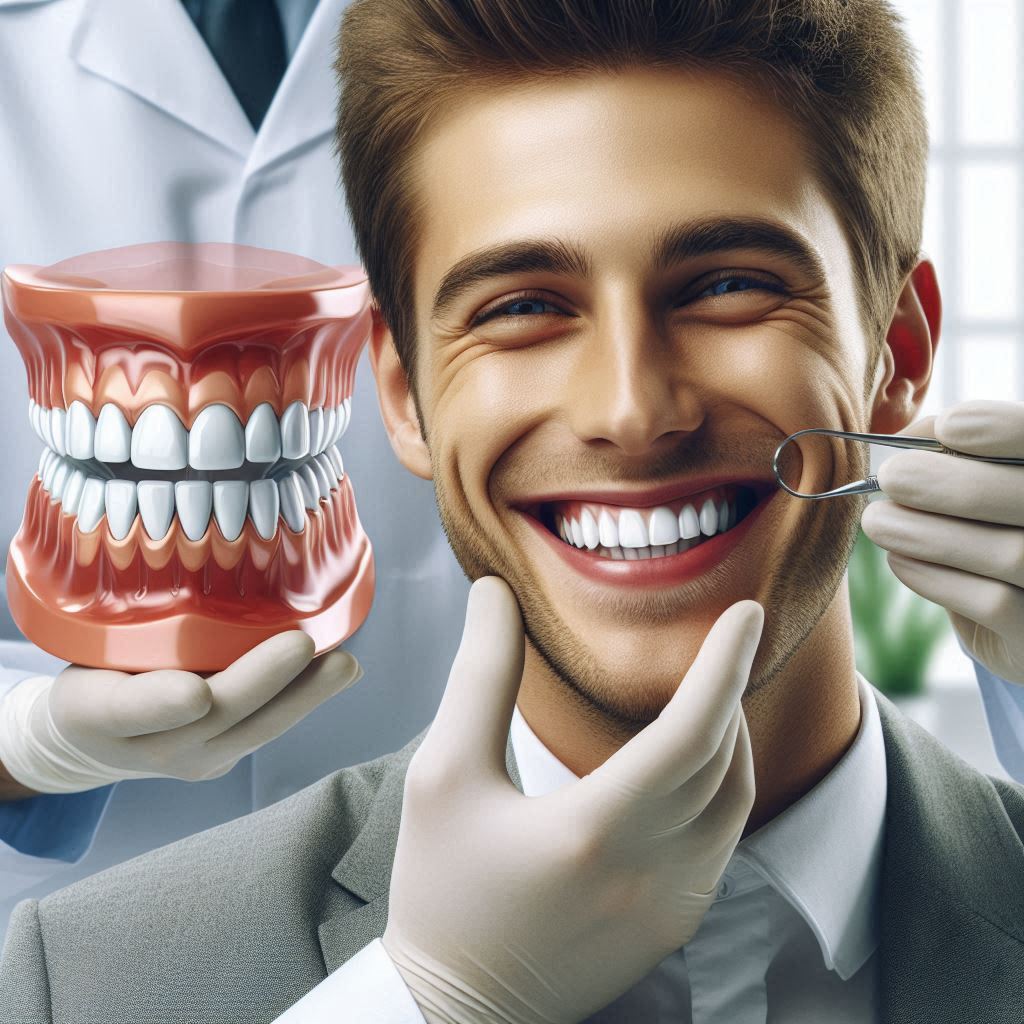Braces are one of the most popular and effective orthodontic treatments for correcting teeth misalignment and improving overall oral health. Whether you’re a teenager or an adult, braces can help you achieve that perfectly aligned smile you’ve always dreamed of. However, the treatment doesn’t end with just getting the braces installed. Maintaining your oral hygiene and taking care of your braces is crucial for ensuring the success of the treatment and achieving the best possible results.
Braces can be a little tricky to manage at first, and proper care requires extra effort. You need to adjust your routine to accommodate cleaning your teeth more thoroughly and monitoring what you eat. Neglecting your braces and oral hygiene can lead to a variety of problems, including cavities, gum disease, bad breath, and delayed progress. This guide will provide in-depth insights into caring for your braces, essential tips on maintaining oral health, and understanding the do’s and don’ts of orthodontic treatment.
Understanding Braces and Their Function
What Are Braces?
Braces are a dental device used to correct malocclusions (bad bites), straighten teeth, and fix other dental alignment issues. The treatment involves attaching a series of components to the teeth, including brackets, archwires, and elastics. These work together to apply gentle pressure to the teeth, gradually shifting them into their correct positions.
- Brackets: Small metal or ceramic pieces that are bonded to the front surface of each tooth. They are the central part of the braces.
- Archwires: Thin wires that connect the brackets. These wires guide the movement of your teeth into alignment.
- Elastics (Rubber Bands): These are used to apply additional pressure on your teeth to fix issues like bite problems.
- Bands and Ties: In some cases, metal bands are placed around the back molars, and these are used to anchor the archwire in place.
Braces need continuous care throughout the treatment to work effectively, and it is important to follow your orthodontist’s instructions on maintenance. A well-maintained orthodontic treatment plan can correct alignment and bite issues, leading to a lifetime of improved dental health.
How Braces Work to Move Your Teeth
Braces work by applying continuous pressure to your teeth over an extended period. This pressure slowly reshapes the bone structure around the teeth, causing them to move into better alignment. The process can take anywhere from several months to a few years, depending on the severity of the misalignment and the patient’s specific needs.
- Tooth Movement: The pressure applied by the brackets and wires on the teeth causes the bones surrounding the teeth to gradually reshape. Over time, the teeth will move into the desired positions.
- Bone Remodeling: The process of bone remodeling involves breaking down and rebuilding bone tissue around the teeth. The pressure from the braces signals the bone cells to resorb (break down) bone on one side of the tooth and rebuild it on the other side.
Understanding how braces work is important because it helps you realize that achieving the best results requires patience and consistent care throughout the treatment period.
Oral Hygiene with Braces
Brushing with Braces: A Step-by-Step Guide
Brushing your teeth with braces is a little more challenging than brushing without them. The brackets and wires can trap food particles and plaque, making it easier for bacteria to build up around your braces. Proper brushing is vital to prevent plaque buildup, cavities, and gum disease.
- Step 1: Use a Soft-Bristled Toothbrush
Use a toothbrush with soft bristles. Harder bristles can damage your braces and cause gum irritation. Special orthodontic toothbrushes, which have V-shaped bristles, are designed to clean around the brackets and wires more effectively. - Step 2: Brush Around the Brackets
The key to brushing with braces is focusing on cleaning the areas around the brackets and wires. Brush at a 45-degree angle to the gumline and use small, circular motions to clean the surfaces of your teeth. Be sure to brush above and below the brackets to remove any trapped food and plaque. - Step 3: Clean the Wire
The wire itself needs to be cleaned as well. You can use the toothbrush to gently clean the wire. Ensure there are no food particles stuck between the brackets and the wire. - Step 4: Brush Your Tongue and Gums
Your gums and tongue are also important areas to clean. Brushing your gums gently can prevent gum disease, while cleaning your tongue helps reduce bad breath and bacteria buildup. - Step 5: Brush for Two Minutes
Spend at least two minutes brushing your teeth, focusing on every surface. Brushing too quickly might leave areas of your teeth and braces uncleaned. - Step 6: Rinse with Fluoride Mouthwash
After brushing, rinse your mouth with a fluoride mouthwash to further protect your teeth from cavities and strengthen the enamel.
Flossing with Braces: Techniques to Use
Flossing is even more important when wearing braces because the brackets and wires create extra spaces where food and plaque can get trapped. To ensure the best oral health, it’s essential to floss once a day.
- Use Floss Threaders or Orthodontic Floss
A floss threader or orthodontic floss can help you thread regular floss under the wire and between the brackets. Regular floss is too thick to use easily with braces, so these specialized tools make the job easier and more efficient. - Gently Clean Between Your Teeth
Insert the floss under the wire, then gently move it up and down between your teeth. Be careful not to snap the floss between your teeth, as this can damage your braces. Make sure to clean between every tooth, not just the ones that feel “dirty.” - Consider a Water Flosser
A water flosser is another excellent tool for people with braces. It uses water pressure to flush out food particles and bacteria from between your teeth and around your braces. While water flossing can’t fully replace traditional flossing, it is a great complement to your oral hygiene routine.
Using Mouthwash: The Benefits of Rinsing
Mouthwash is an important tool for maintaining oral health, especially when wearing braces. It helps to rinse away food particles, bacteria, and plaque, preventing the buildup of harmful acids that can lead to tooth decay.
- Choose a Fluoride Mouthwash
Fluoride mouthwashes are particularly beneficial because they help remineralize your teeth, making them more resistant to cavities. Fluoride also helps strengthen the enamel, protecting against damage from plaque and bacteria. - Alcohol-Free Options
Alcohol-based mouthwashes can dry out your mouth, which could lead to an increase in bacterial growth. Alcohol-free mouthwashes are a better choice, as they clean the mouth without causing dryness. - Rinse After Every Meal
While mouthwash should not replace brushing and flossing, it’s a great addition to your routine. It’s especially helpful if you’re on the go or don’t have access to a toothbrush after a meal.
Dealing with Discomfort and Adjustments
Understanding Braces Pain and How to Manage It
It’s common to experience some discomfort when you first get your braces or after an adjustment. As your teeth begin to move into place, you may feel pressure or soreness, especially around the brackets or wires. Here’s how to manage it:
- Pain Relief Options
Over-the-counter pain relievers like ibuprofen or acetaminophen can help relieve the pain associated with braces adjustments. Always follow the recommended dosage instructions, and consult your orthodontist if you have any concerns. - Cold Compress
Applying a cold compress to the outside of your face near the area where you feel pain can help reduce swelling and numb the discomfort. Simply apply the compress for 15-20 minutes at a time to get relief. - Orthodontic Wax for Sore Spots
If the brackets are rubbing against the inside of your lips or cheeks, orthodontic wax can be applied to the brackets to provide relief. The wax will prevent direct contact with the inside of your mouth, reducing irritation.
Adjusting to Eating with Braces
When you first get braces, eating can be a challenge. The brackets and wires can make chewing more difficult, and you may need to avoid certain foods to protect your braces.
- Avoid Sticky and Hard Foods
Sticky foods like caramel, chewing gum, and taffy can get stuck in your braces, while hard foods like nuts, popcorn, and ice can break the brackets or wires. Stick to soft, bite-sized foods to avoid damaging your braces. - Cut Food into Small Pieces
Cutting your food into smaller pieces can make it easier to chew without putting too much pressure on your braces. Foods like fruits, vegetables, and meats should be cut into bite-sized pieces to reduce the risk of damage. - Opt for Softer Foods After Adjustments
After getting your braces adjusted, you may experience more soreness than usual. Eating soft foods like mashed potatoes, pasta, yogurt, and smoothies can help you avoid further irritation while still getting the nutrients you need.
Braces-Friendly Foods and Drinks
Best Foods to Eat with Braces
While there are some foods you’ll need to avoid with braces, there are plenty of delicious options that will keep your teeth healthy and your braces intact.
- Soft Fruits
Soft fruits like bananas, applesauce, grapes, berries, and peaches are great for people with braces. They are gentle on your teeth and won’t put pressure on the brackets. - Soft Vegetables
Steamed vegetables such as carrots, zucchini, spinach, and potatoes are easy to chew and won’t damage your braces. Avoid raw vegetables that are too crunchy, like celery or raw carrots. - Tender Meats
Chicken, fish, and other tender meats can be eaten without difficulty. Just make sure to cut the meat into smaller pieces so you don’t put unnecessary stress on your braces.
Foods and Drinks to Avoid with Braces
Certain foods can pose a threat to the integrity of your braces and your overall oral health.
- Hard Foods
Nuts, hard candies, ice, and popcorn kernels are best avoided. These foods can break or damage the brackets and wires, delaying your treatment. - Sticky Foods
Caramels, gummies, and taffy can stick to your braces and are hard to remove. If you eat these types of foods, make sure to clean your teeth immediately afterward. - Sugary and Acidic Drinks
Soda, energy drinks, and sugary juices can increase the risk of tooth decay and damage the enamel of your teeth. If you do drink them, use a straw to minimize the contact between the drink and your teeth.
Keeping Your Braces in Good Condition
Regular Orthodontic Check-Ups
Your orthodontist plays a critical role in ensuring your braces work as intended. Regular check-ups are essential for monitoring your progress, making adjustments, and addressing any issues that may arise during your treatment.
- Adjustments
Every few weeks, you will visit your orthodontist for adjustments to your braces. These adjustments will involve tightening the wires or replacing the rubber bands to ensure that your teeth continue to shift into position. - Progress Monitoring
During these visits, the orthodontist will check the alignment of your teeth, ensure the braces are in good condition, and evaluate how well your teeth are responding to the pressure. They may also take X-rays to track the movement of your teeth.
What to Do If Something Breaks
If a bracket or wire breaks, it’s essential to contact your orthodontist immediately. While waiting for your appointment, try using orthodontic wax to cover any broken parts of the braces to avoid irritation to your mouth.
Conclusion
Caring for your braces might feel overwhelming initially, but with consistent effort and the right approach, you can make the treatment process smooth and successful. By maintaining a diligent oral hygiene routine, which includes brushing and flossing regularly, you can ensure your teeth and braces stay clean, preventing plaque buildup and cavities. Additionally, avoiding certain foods that can damage your braces, such as sticky candies, hard nuts, or chewy taffy, will help prevent breakages and keep your treatment on track. Regular visits to your orthodontist are equally important, as they allow for necessary adjustments to be made, ensuring your teeth are progressing in alignment. These check-ups also provide an opportunity to address any issues, such as discomfort or broken brackets, so they can be promptly fixed. Following your orthodontist’s guidance regarding care, maintenance, and any restrictions will be crucial for achieving the best results.
Though it may seem like extra work, taking care of your braces is a worthwhile investment in both your appearance and long-term health. The benefits of straight teeth go beyond just aesthetics—they also contribute to better oral function, improved bite, and reduced risk of oral health issues like gum disease and tooth decay. Moreover, by staying committed to your routine, you are ensuring that your orthodontic treatment will be completed on time, with the best possible outcome. Remember, patience and consistency are key. With your orthodontic treatment, you are on the path to a beautiful smile that will last a lifetime. Stick to your oral care regimen, follow the advice of your orthodontist, and before you know it, you’ll enjoy the benefits of a healthier, more confident smile.
SOURCES
American Association of Orthodontists (AAO). (2019). Braces care: Tips for maintaining your braces and oral health. American Association of Orthodontists.
Geron, S., & Shapira, J. (2011). Orthodontics and oral health: The role of oral hygiene in orthodontic treatment. Journal of Clinical Orthodontics, 45(4), 257-263.
Gibson, L., Hughes, R., & Sullivan, P. (2014). Dental care during orthodontic treatment: A guide to brushing, flossing, and caring for braces. Dental Journal of Clinical Practice, 23(2), 94-100.
Kang, H., & Kim, S. (2017). Oral hygiene and its role in orthodontic treatment: A comprehensive review. The Journal of Orthodontic Research, 34(5), 107-114.
Liu, Z., & Qiao, X. (2015). Braces and oral hygiene: Recommendations and considerations for patients undergoing orthodontic treatment. International Journal of Dentistry and Oral Health, 17(3), 44-52.
Mendelsohn, S., Brown, A., & Phillips, K. (2018). Managing discomfort during orthodontic adjustments: What patients need to know. Orthodontic Journal of America, 37(2), 180-188.
Pinto, J., Martins, A., & Cavallini, M. (2016). Nutrition and orthodontics: Braces-friendly foods and beverages for optimal dental health. Journal of Nutrition and Dental Care, 22(4), 350-359.
Smith, J., & Liu, M. (2013). Flossing with braces: Effective techniques and tools for patients. Journal of Preventive Dental Care, 28(6), 212-220.
Wilson, T., & Roberts, R. (2019). The importance of mouthwash in orthodontic care: Benefits of fluoride and alcohol-free products. Oral Health Review, 16(3), 189-198.
Zhou, X., & Xu, L. (2020). Managing oral hygiene with braces: A step-by-step approach for patients and caregivers. Clinical Orthodontic Journal, 11(1), 22-30.
HISTORY
Current Version
February 11, 2025
Written By:
SUMMIYAH MAHMOOD




